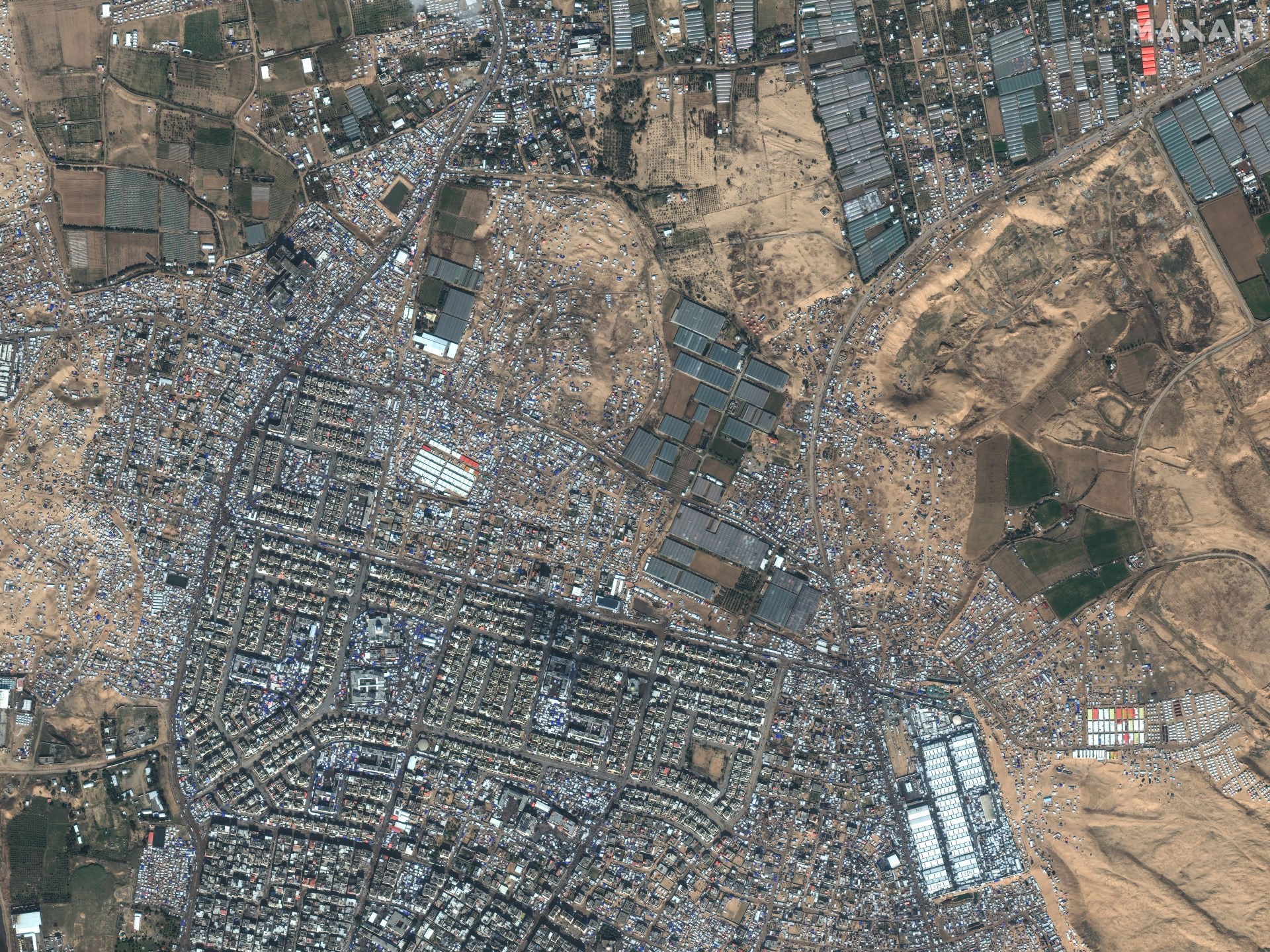Wolves are back in Germany, stirring fierce debate
“Aiiieee,” she screamed, recording with her phone as she launched herself toward the shaggy, slinking figure that had locked on to one of her ewes.
“Get him!” she yelled to one of her dogs. The startled wolf disappeared back into the trees.
Virtually extinct in Germany for more than a century, wolves are flourishing here once again — a rare success story in a world of diminishing biodiversity. One factor: German reunification, which extended protections in the former West Germany to the former East. Their numbers have increased more than sixfold in the past decade, with Germany now home to as many as 161 packs, or about 1,300 wolves.
But accompanying their rebound are attacks on livestock — and an emotional debate.
The spread of wolves — through Germany and into Belgium, the Netherlands and beyond — has become an issue at the highest levels of the European Union. Last fall, it touched a personal nerve for European Commission President Ursula von der Leyen, when a wolf killed her pony outside her home in northwest Germany. She wrote later that the E.U.’s executive body recognizes “that the return of the wolf and its growing numbers lead to conflict.”
At a local level, the conflict pits farmers against conservationists. People on both sides have been accused of taking matters into their own hands: Hunting shelters have been burned down and wolves have been illegally shot and dismembered.
In Lower Saxony, people enjoying a canal-side stroll last month came upon a floating blue garbage bag containing the bullet-ridden carcass of a wolf. Its head and tail turned up in a second bag the next day. And in April, a severed wolf’s head was found outside a local nature conservation office.
“It’s reaching boiling point,” said Gerd Jahnke, who owns the sheep that Denecke grazes on the heather-blanketed moors of Lüneburg Heath, 30 miles south of Hamburg. “The two sides are hardening.”
The return of wolves to Germany
Jahnke — who keeps 1,600 ewes on the farm he runs with his wife, Renate, and their 33-year-old daughter — moved into the modest farmhouse topped with a sheep weather vane in the 1990s.
“It was unimaginable that there would be wolves at that time,” he said, drinking coffee on his porch in his green farming overalls, as kittens played at his feet.
In Germany, the last wolf pack was believed to have died out around 1850 — hunted out of existence. For generations of children, experience with wolves was confined to the “big bad” ones of fairy tales or the stuffed ones in exhibits.
But reunification in 1990 was auspicious for wolves. In East Germany, it had been legal to hunt wolves, and they were routinely shot if they crossed the border from Poland. In united Germany, though, the wolf’s protection in the West was applied to the whole country.
In 2000, the first wild wolves in 150 years were born in Germany. Conservationists celebrated the achievement. “It is a success story,” said Marie Neuwald, an adviser on wolves at Germany’s Nature and Biodiversity Conservation Union. “Many people wouldn’t have expected that a species like wolves could find space to live in a country like Germany.”
Wolf population in 2021-2022
A wolf that has
been recorded
in an area for more
than 6 months
Two wolves
that live together
in one area but
have no cubs
More than two
wolves recorded
together
in the area
SAMUEL GRANADOS / THE WASHINGTON POST

Wolf population in 2021-2022
More than two
wolves recorded together
in the area
Two wolves that
live together in one
area but have no cubs
A wolf that has
been recorded
in an area for more
than 6 months
SAMUEL GRANADOS / THE WASHINGTON POST
The wolves’ ability to traverse huge distances to find appropriate habitat has meant they’ve needed little help on the conservation front, she said. The challenge has been trying to work out how they can live alongside the humans that once drove them out.
Germany does not have the expansive national parks that have supported reintroduction in the United States, said Steffi Lemke, Germany’s environment minister. It is smaller than Montana — where wolves were reintroduced to Yellowstone National Park in the mid-1990s and are hunted under quota — but Germany has 80 times as many people and a similar number of wolves.
“Germany is very, very densely populated, and we have very few large, contiguous natural areas,” Lemke said. “That’s why it has been difficult to manage between those who say that this is a very great success of nature conservation to have this predator here with us again, and those who say we must protect the grazing animals.”
Jahnke’s farm had its first wolf attack in 2013. He found four dead lambs in the snow. Since then, he has lost a total 192 sheep.
As the wolf population has grown, attacks have become more frequent. There have been 216 in Lower Saxony so far this year — killing 601 animals — compared to 174 attacks in the same seven-month period last year. Across Germany, 4,366 farm animals were killed by wolves in 2022, including 30 horses and four llamas. That marked a 30 percent rise from the year before.
“It’s emotional,” Jahnke said. “It really makes you crazy.”
The protection of wolves is enshrined in E.U. law, though last year the European Parliament passed a nonbinding resolution calling for a downgrade. The European Commission, which would oversee such a change, is conducting an analysis.
E.U. member states have split into camps over the issue, with environment ministers from a dozen countries — including Germany — arguing against any weakening of protections; while Austria, Finland, Sweden and Norway have tested the teeth of existing protections by allowing recent wolf culls.
For now, Germany only allows a wolf to be shot if it’s deemed a particular nuisance to livestock. After each attack, a DNA swab is taken from the dead animal to find out which wolf was responsible. If a wolf is found to have jumped electric fences or gotten past protection dogs twice, a special shooting permit can be granted.
Perhaps the most well-known wolf to face a kill order was GW950m, a wolf responsible for a dozen attacks, including the one that killed von der Leyen’s pony, Dolly. That wolf is believed to have evaded hunters so far.
“It’s not possible to aim for a specific wolf,” said Marion Klopp, 53, a German hunter whose house is adorned with fox fur cushions, deer antlers and stuffed birds and who wants to see the introduction of wolf hunting quotas. “The losers in this situation are the animal owners and the goats and sheep,” she said, pulling out a laminated binder of pictures of livestock attacked by wolves.
Conservative politicians have taken up the cause. “The wolf doesn’t belong here,” Barvaria’s premier, Markus Söder, said this spring, calling for a cull in the Alps. It has also become a hot-button issue for the far-right Alternative for Germany party, which is surging in the polls ahead of key elections in eastern Germany next year.
As the debate has sharpened, Christian Meyer, the Green environment minister in Lower Saxony, said he has received death threats.
The issue is becoming “explosive,” said Lemke, the federal environment minister.
Among advocates for the wolves, some fear it’s a matter of time before a change.
“On the political side, everything is going to the direction: We want to kill, we want to kill,” said Christian Berge, an activist who keeps a dozen wolves and wolf-dog mixes in his backyard. He said he hopes the courts will stop any changes out-of-line with European law.
And he accused the anti-wolf camp of crying wolf. “The hunters and the farmers always exaggerate, because they want to make the people afraid,” he said, as he fed a litter of four-month-old wolf pups liver sausage on his doorstep.
Conservationists argue that there are ways for man and beast to live side-by-side.
One of those adaptations bounded up to bark at visitors approaching Jahnke’s flock.
The farmer has 20 white-coated Great Pyrenees, bred not for herding but for protection. The dogs are raised with the flock, so they treat the sheep as family. As if to demonstrate, one nuzzled a black sheep before rolling over on its back.
Jahnke’s sheep are additionally penned with electric fencing, and a closed-circuit television camera helps with monitoring for signs of wolves.
The dogs and the fencing are funded by the government, though their upkeep is not.
While increased fencing is unpopular within Germany’s culture of avid hikers, and simple compensation payouts for dead animals might be less expensive than the $20 million Germany spent on dogs and fencing last year, government data suggests the measures help. In as many as three-quarters of attacks on sheep and goats last year, there was little or no protection in place.
Hobbyist farmer Karl-Gustav Laser said he left a small pen of sheep unattended after a worming treatment that required their separation from the main herd. He knew he should have put up electric fencing, he said, but he risked it.
“I can’t blame the wolf,” he said. “He acted according to his nature.”
The government’s hope is that the adoption of protection measures will help with the acceptance of the wolves’ return.
Jahnke pulled out his phone to show a video of wolves encountering his Great Pyrenees one night. Faced with the barking dogs, an approaching wolf scampers away. Four other pairs of glinting eyes keep their distance.
Jahnke said it has taken years of adjusting fence heights, dog breeds and how the animals live with the herd to find a formula that seems to be working. He said it also helped that one “problem wolf” was shot and another disappeared.
Some farmers complain they are left with the burden and financial drain of maintaining fencing and feeding extra dogs. And while government money is available to help protect sheep, it doesn’t extend to cattle or horses.
Ralf Hentschel, an activist with Friends of Wild Wolves, said the issue could be resolved if farmers got better compensation. His group helps farmers install fences and pay for dogs.
“It is an additional job and no one likes to work for free,” he said.
Germany has the resources to work out a solution, Lemke said. “We must also accept and respect nature and not take up the entire global habitat ourselves. That would be very, very lonely for us.”
Check out our Latest News and Follow us at Facebook
Original Source






